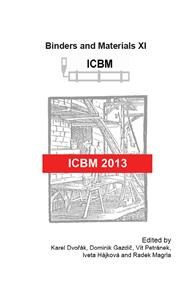p.180
p.184
p.188
p.192
p.196
p.200
p.204
p.215
p.220
Basic Characteristics of Green Cements of CEM V/A and V/B Kind
Abstract:
The reduction of the clinker to addition ratio is becoming of main technological importance because energy saving potential by process optimization at the cements manufacture is almost exhausted. The main properties of composite cements of CEM V/A and CEM V/B kinds of Austrian (AT) and Slovak (SK) provenance with cement clinker contents between 45.1 % (CEM V/A-AT) – 52.9 % (CEM V/A-SK) and 26.9 % (CEM V/B-AT) – 30.9 % (CEM V/B-SK), and reference Slovak CEM I 32.5 R cement containing 95 % of the clinker were tested. The composite cements consist of cement clinker with following additions: blast furnace slag, fly ash and natural pozzolan - zeolite. Basic cement properties (normal consistency, initial and final set, volume stability) and fresh mortar properties (workability, volume density, air content) and strength parameters using standard mortars with W/C of 0.5 are introduced. Laboratory-made CEM V/A concrete specimens (AT and SK) demonstrated 90-day cube compressive strength between 49.8 – 50.9 MPa in water and 45.2 – 48.2 MPa in 60 % R.H. dry air; and those of CEM V/B concretes between 39.7 – 40.9 MPa in water and 26.9 – 38.7 MPa in 60 % R.H. dry air opposite to 53.6 MPa in water and 48.3 MPa of the CEM I 32.5 R concrete kept 90 days in 60 % R.H. dry air at (20 ± 1) °C. The use of CEM V/ (A, B) cements for structural concrete is strongly restricted by normative limitations in European countries. In order to improve this circumstance in Austria and Slovakia, the common research project was solved between 2010 and 2012 with the aim to show application possibilities of CEM V/A and CEM V/B cements for common usage in the structural concrete and ready-mixed concrete.
Info:
Periodical:
Pages:
196-199
Citation:
Online since:
February 2014
Authors:
Keywords:
Price:
Сopyright:
© 2014 Trans Tech Publications Ltd. All Rights Reserved
Share:
Citation:


